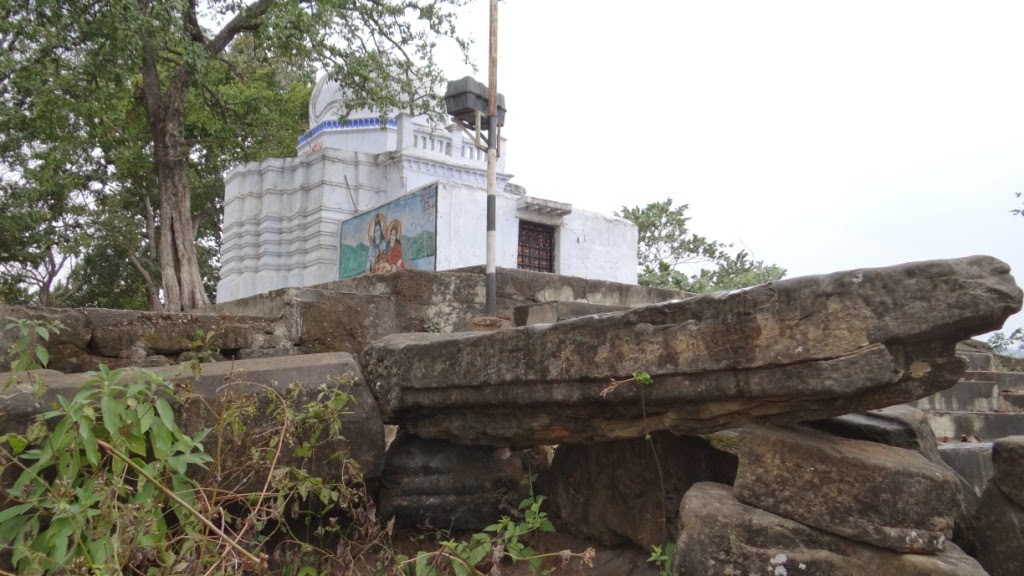It has been a wonderful journey so far with my kite photographer
friend, Yves Guichard. For the past eight years, we have been playing with a
kite attached with a camera, viewing beautiful Buddhist monuments of Bihār and
successfully capturing some breathtaking images of many sacred Buddhist sites in Bihār. Once again after a gap of four years, we took the Mahāparinirvāṇa trail,
the last journey of the Buddha. The objective was to once again capture some of
the stūpas along this trail. Unfortunately, the weather forecast was not on our
side. With cloudy weather when we left Nālandā on the 28th of
February, we still wanted to take a chance that the weather would turn
favourable the next day. The last journey of the Buddha started from
Griddhakūṭa (Vulture’s Peak). Moving in stages he touched present day Silāo,
Nālandā, Patnā then crossed the Ganges, stopping here and there until he
reached Vaiśālī.
 |
| Yves Guichard (in center) at Birpur |
We also captured the dark side (unexcavated side) of the Kesariyā stūpa. Not sensational news like the announcement of the first pictures of the dark side of the moon taken by soviet capsule Luna-3 in 1959, but to me this image of the unexcavated side of stupa is equally fascinating as it revealed part of the stupa. Just imagine a large lump of earth with dense vegetation in the middle of nowhere. This led to variety of local legends. Cunningham in 1861 was told by the local people that in ancient times King Bena along with his family burned himself inside the mound after his wife drowned in the nearby tank. Therefore, the Kesariyā mound was locally called ‘Rajā Bena ke deorā’. In an excavation in 2000, it was revealed to be a terraced stupa, one-of-kind in the Buddhist World.
After we finished taking the pictures with the kite, I was approached by two officials who were supervising scientific clearance work of the Kesariyā stūpa. They told me that it is a ASI protected site and photography was not allowed. I should have taken their permission. They allowed us to take pictures and for that we should pay them Rs. 2000. Whooping large amount! They further added how all the tourists (mainly foreigners) pay them 2000 bucks for being allowed to take pictures. So much of easy money! Feeling envious of these guys!
On 1st March we reached Sofā temple on the banks of the Pandai River. The existing temple has been built over the remains of an ancient Hindu temple. We wanted to take an aerial picture of the temple but the wind was blowing too hard to play with the kite and soon it started drizzling.
Our last stop of this Mahaparinirvana trail was the twin pillar site of Rampurwā. Rampurwā is the only place where two Ashokan Pillars have been discovered in close proximity. And this is very intriguing. I believe this site should be the true Kuśinagara, the place where the Buddha attained Nirvāṇa. For detail, you may visit my blog post Rampurwā: A compelling case of Kuśinārā.
At Rampurwā, I was extremely happy
to see a Buddha statue installed over one of the stupa mounds. I was told by
the local Hindu priest that a group of Vietnamese pilgrims enshrined this image
last year. So, it is no more only an Archaelogical site, the first
step towards restoration of its livingness has begun. For us these
are ‘Ashokan Pillar’ (Inscribed or not) to them they are ‘Dhamma Pillars’
(the Pillars have Dhamma edicts). To us Ashoka installed them
on trade routes but for them Ashoka marked sacred footsteps of the Buddha with
Pillars with and without Dhamma edicts.
We say that it is a Buddhist circuit and Buddhist pilgrimage but instead, we promote them as an Archaeological site. Interpretation does matter! These are living monuments, very sacred to the world. Awareness has to come; an opportunity for all of us to work upon. Let’s begin!!!







2 comments:
Excellent work. My compliments.
Recently I visited Amravathi near Vijaywada in Andhra Pradesh. The remains of huge Stupa are magnificent. Many nearby places in and around Amravathi are having ancient remains. These speak volumes about our true heritage but unfortunately these are not preserved, neither are they documented.
Thanks sir!
Post a Comment